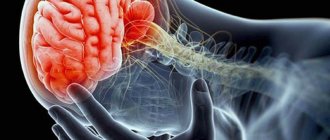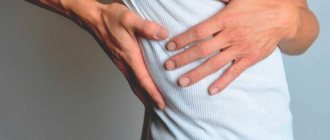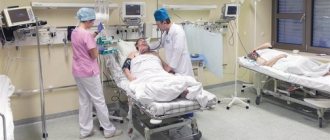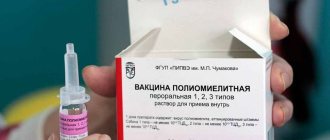The term “spastic diplegia” refers to the most commonly diagnosed form of cerebral palsy. Another name for the pathology is Little's disease. The disease is characterized by spastic tetraparesis, which is most pronounced in the lower extremities. In addition, patients exhibit disturbances in the functioning of the cranial nerves and speech disorders. In isolated cases, mild mental retardation is diagnosed. The prognosis for spastic diplegia cerebral palsy directly depends on the severity of the disease and on how responsibly the patient follows medical recommendations.
Pathogenesis
Cerebral palsy is a disease of both monopathogenetic and polyetiological nature. The development of a pathological process is triggered when the child’s brain is exposed to various types of unfavorable factors. The first signs of cerebral palsy can appear during fetal development, during delivery, and in the first weeks of life. The disease is characterized by a non-progressive course. Clinical manifestations of the disease are caused by motor, mental and speech disorders.
Forms of cerebral palsy:
- Spastic diplegia. It is characterized by damage to the lower extremities; the arms remain coordinated and quite active. In most cases, intelligence is not affected, the child is easy to teach. In the International Classification of Diseases (ICD-10), spastic diplegia cerebral palsy is assigned code G80.1.
- Double hemiplegia. Both upper and lower extremities are affected. This form is also characterized by the presence of speech disorders, atrophy of the optic nerves, and rigidity of muscle tissue. This is the most severe form of cerebral palsy. The code in the ICD is G80.2.
- Hemiplegia. One side of the body is affected. Children exhibit deviations in intellectual and mental development. This form is characterized by periodic occurrence of epilepsy attacks. The code in the ICD is G80.2.
- Dyskinetic appearance. Characteristic signs for this form: incorrect positioning of the lower extremities, involuntary twitching of the legs, convulsions, speech disorders. Intelligence is practically not affected, as is the case with spastic diplegia cerebral palsy. The ICD-10 code is G80.3.
- Ataxic form. It is characterized by decreased muscle tone, pronounced tendon reflexes, speech impairment, complete lack of coordination of movements, and mental retardation. Oligophrenia is often diagnosed. G80.4 - ICD-10 code.
Spastic diplegia cerebral palsy is a pathology in which a person can be socially adapted. The patient easily perceives information and communicates with other people. However, in severe cases, he cannot serve himself at home.
general description
Cerebral palsy (CP), spastic diplegia (Little's disease) (G80.1) is a chronic non-progressive symptom complex of motor dysfunction, more pronounced in the lower extremities, occurring during the perinatal period.
Etiological factors: hypoxia/asphyxia, head trauma at the time of birth. Prevalence of cerebral palsy: 2.5 cases per 1000 births. Spastic diplegia accounts for 0.75 of all spastic forms. More common in premature babies.
Etiology
Spastic diplegia cerebral palsy can occur under the influence of many provoking factors. The main reasons for the development of the disease:
- Prematurity. It is a consequence of the premature onset of the delivery process. This occurs with fetoplacental insufficiency, placental abruption, and Rh conflict between mother and fetus. Premature birth can also be caused by diseases that a pregnant woman suffers from. These include: diabetes mellitus, kidney dysfunction, heart disease. Preeclampsia is also a provoking factor.
- Birth injuries. The complicated process of birth of a child is the most common cause of the development of spastic diplegia cerebral palsy. Injuries can occur during rapid labor, narrow passageways, or breech presentation of the fetus.
- Asphyxia in a newborn child. In some cases, after birth, babies cannot breathe on their own. Causes of asphyxia: ingestion of amniotic fluid into the respiratory tract, abnormal development of the child in the prenatal period, infectious diseases, immunological incompatibility of mother and baby, pneumopathy.
- Genetic predisposition. In most cases, people suffering from the disease give birth to children with spastic diplegia cerebral palsy.
- Hypoxia or ischemia of the fetus during intrauterine development. With a lack of oxygen and poor circulation, the child’s brain is damaged. Most often, the consequence is the development of severe forms of cerebral palsy.
- Infectious lesions of the musculoskeletal system.
- Physical impact on the fetus. A risk factor is the conduct of X-ray or radionuclide studies during the gestational period.
In addition, the lifestyle of a pregnant woman is of no small importance. The risk of developing pathology increases significantly if the expectant mother is fond of smoking, drinking alcoholic beverages and narcotic substances, and also if her daily activities involve constant contact with harmful compounds.
Clinical manifestations
A typical symptom of spastic diplegia cerebral palsy is tetraparesis, with damage predominantly to the lower extremities. Muscle hypertonicity is a necessary condition during the period of intrauterine development of the fetus. Soon after the baby is born, its intensity begins to weaken. As a rule, muscle hypertonicity disappears completely by a maximum of six months. In the presence of spastic diplegia, it does not weaken.
The state of hypertonicity is most noticeable in the area of the foot flexor muscles. As a result, a specific position of the legs is formed. In a sick child, the knees are joined, the hips are rotated inward, and the legs are pressed together or crossed.
Other clinical manifestations:
- Lagging behind peers in physical development. Sick children begin to take their first steps only at 3-4 years old.
- Specific gait on toes with straightened legs. In this case, the lower limbs rub against each other in the shin area.
- The tone in the arm muscles is usually normal. Sometimes it is slightly elevated.
- Oculomotor disorders.
- Visual impairment.
- Strabismus.
- Hearing loss.
- Smoothing of folds in the nasolabial area.
- Incorrect position of the tongue, it is deviated from the midline.
- Pseudobulbar palsy.
- In 75% of patients, speech development delay is detected.
- Sensory functions are preserved.
- Involuntary movements of the upper limbs.
- Every 5th patient is diagnosed with oligophrenia.
The diagnosis of spastic diplegia cerebral palsy in children under 12 months of age is made if the following symptoms are present:
- The child cannot independently raise his head and hold it in this position.
- The baby is unable to roll over without assistance.
- The newborn is not at all interested in toys or any other bright objects.
- The child cannot sit independently.
- The baby makes no attempt to move from one place to another. He has no desire to crawl.
- The child cannot stand on his feet.
- The baby does not use the affected limb.
In older children, parents may notice uncontrollable contractions of muscle tissue. In addition, in babies, sluggish movements are replaced by sharp ones and vice versa.
Symptoms of cerebral palsy
Symptoms of cerebral palsy are detected immediately after birth or gradually appear during infancy.
There are three stages of cerebral palsy.
At an early stage (up to 6 months), physical inactivity, episodes of dyspnea, convulsions, tremor, manifestations of pathology of the eye muscles (Graefe's symptom, “setting sun”, strabismus, nystagmus), and decreased innate reflexes (protective, grasping, crawling) are observed.
| "Sunset" symptom |
At this stage, paresis/paralysis begins to form.
At the second stage (chronic-residual) (6 months - 2 years), paralysis continues to form.
During a neurological examination, the legs are extended, brought towards each other, crossed, resting “on the toes”. Characterized by hypertonicity of the plastic type, pathological foot signs (70%), revitalization of tendon reflexes (50%), and lack of coordination (45%). Also noted are strabismus, asymmetry of the nasolabial fold, impaired vision, hearing, speech, and a moderate decrease in intelligence. Pelvic functions are not impaired.
In the third (late, residual) stage (over 2–4 years of age), disturbances in the motor, speech, and mental spheres stabilize, and contractures and joint deformities form.
Severity
There are several options for the development of the disease. They are described in the table below.
| Severity of pathology | Characteristic clinical manifestations |
| Lightweight | In the first 6 months, the child’s health is not in doubt. He is developing normally. With a mild degree of spastic diplegia cerebral palsy, after some time signs of paresis of the lower extremities appear. In this case, the child is able to move independently and without the help of third parties. Both mental and mental development meet all standards. |
| Average | This degree is characterized by severe spasticity in the lower extremities. The person cannot move independently. While walking, he is forced to use crutches, canes or other improvised means. Minor changes occur in the cognitive sphere. Social adaptation is possible. |
| Heavy | Characteristic signs are clearly expressed immediately after the birth of the child. The baby is diagnosed with tetraparesis with primary damage to the lower extremities. In the future, the child cannot move independently. Social adaptation is also impaired. |
If any alarming sign occurs, you should consult a doctor. Ignoring symptoms leads to the fact that any load on the spinal column is distributed unevenly across it. This, in turn, is a trigger for the development of all kinds of complications.
Diagnostics
A neurologist treats spastic diplegia cerebral palsy. It is he who should be contacted when the first alarming symptoms arise. Based on the history and physical examination, the specialist issues a referral for a comprehensive examination, including:
- Examination by an ophthalmologist.
- Consultation with an ENT doctor.
- Electroencephalography.
- Electroneuromyography.
- Neurosonography.
- Ultrasound or MRI of the brain. Ultrasound examination is indicated for open fontanel. In other cases, an MRI is performed.
All received data is displayed in the patient’s medical record. The doctor enters into it not only the research results, but also the supposed diagnosis with the ICD-10 code.
Spastic diplegia of cerebral palsy must be differentiated from other forms of cerebral palsy, pathologies of the central nervous system, as well as from other ailments caused by hereditary predisposition. The doctor may also arrange a referral for genetic counseling.
Drug treatment
Currently, no specific etiopathogenetic therapy for the disease has been developed. Treatment of pathology only involves taking medications and undergoing a rehabilitation course.
The classic drug therapy regimen is presented in the table below.
| Group of drugs | Impact on the body | Examples of funds |
| Vascular agents | The active components contribute to a significant improvement in cerebral circulation. In addition, the process of supply of nutritional components to brain tissue is normalized. | "Cinnarizine" |
| Neurometabolites | Prescribed to improve the functioning of the central nervous system. | "Glycine", "Thiamin", "Pyridoxine" |
| Muscle relaxants | Active components help reduce the severity of muscle spasticity. | "Baclofen" |
| Nootropic drugs | While taking it, cognitive functions are activated. | "Piracetam" |
| Botulinum toxin | This drug is administered intramuscularly. Botulinum toxin preparations are prescribed to relieve spastic tension, thereby significantly reducing the risk of muscle contractures. |
The goal of drug treatment is to prevent the development of all kinds of complications.
Treatment
To eliminate spastic diplegia, a person will need to take medications. They are needed to eliminate negative symptoms and prevent complications. The patient may be prescribed muscle relaxants to reduce muscle spasticity. Vascular agents are used to normalize cerebral circulation. Nootropic drugs are needed to activate cognitive functions. Neurometabolites normalize the functioning of the central nervous system.
Additionally, a child with Little's syndrome will need to do therapeutic exercises and go to massage. In this case, it will be possible to relax the muscles and increase the range of movements. Correction of speech disorders is carried out with a speech therapist. Additionally, it may be necessary to eliminate mental disorders.
Spastic diplegia is difficult to treat; only a quarter of patients can move independently. In severe cases, a person will need constant care, because he will not be able to cope on his own. In any situation, spastic diplegia requires treatment and rehabilitation, because this is the only way to improve the patient’s well-being.
Rehabilitation therapy
Prescribed to absolutely all patients. Carrying out rehabilitation activities is aimed at improving social adaptation. In addition, therapy involves teaching patients self-care skills.
Rehabilitation treatment includes the following points:
- Exercise therapy. Classes can be conducted either at home or in a doctor’s office. The set of exercises is developed exclusively by a neurologist. When compiling it, the specialist takes into account all the individual health characteristics of the patient. Exercise therapy for spastic diplegia cerebral palsy helps maintain range of motion. In addition, physical therapy is an excellent prevention of the development of complications.
- Massage. Helps improve blood circulation in affected muscles. In addition, during treatment, muscle relaxation occurs.
- Speech correction. Includes individual sessions with a speech therapist.
If there are signs of oligophrenia, additional consultations with a psychologist are carried out. A specialist most often corrects disorders using play therapy.
Symptoms
| Occurrence (how often a symptom occurs in a given disease) | |
| Gradually increasing weakness in the leg muscles (leg weakness) | 80% |
| Gradually increasing weakness in the arm muscles | 80% |
| Gait disturbance, difficult to specify (abasia) | 50% |
| Attacks of seizures with or without loss of consciousness (convulsions, convulsive seizures, convulsions, convulsions) | 50% |
| Learning difficulties | 50% |
| Delayed physical development | 40% |
| Difficulty urinating | 40% |
| Weakness in the arm (right or left) | 30% |
| Difficulty speaking (speech disorder, speech disorder, speech problems) | 15% |
| Numbness of the entire arm | 15% |
| Violent movements in the limbs | 10% |
| Hearing loss (hearing impairment, hearing impairment, poor hearing) | 10% |








